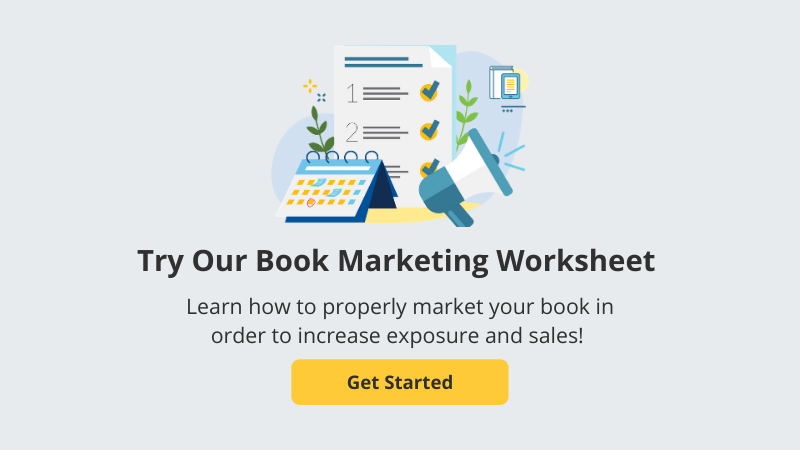Many authors write a book based on a subject they like, or perhaps on a unique experience they have had. As a book marketing consultant, a question I frequently hear is, “My book is finished, now what do I do?” Successful book marketing lies in giving prospective readers what they want to read. Figuring that out depends on four pillars: target market, customer needs, integrated marketing, and profitability.
1. Identify and Define Your Target Readers
No book’s content is for everybody, regardless of how perfect you think it is. You'll sell more books if you first describe your target readers, the people who may be interested in what you have to say. Define your readers with the five Ws: Who, What, Where, When and Why.
First, who are your readers?
How old are they? What's their level of education (to determine the vocabulary in your publicity and writing) or income level (to decide if your books be in Walmart or on cruise ships)? In what format do they want to buy (an older reader may prefer a large-print edition, a Gen Z reader may read an ebook off a mobile device)? Where do they look for the information in your book? Empty nesters may shop in Hallmark stores, young parents in supermarkets, and business travelers in airport stores.
Next, consider when they purchase.
Is your content associated with a major holiday, season or appropriate as a gift? If your content is suitable for sale during the fourth-quarter holiday season, do not publish it in September and expect to have it on the shelves in time. Think about when the store buyers (for bookstores or other retailers) place orders for their holiday titles, and that is probably in June.
Finally, why do they buy?
You may believe you are selling a 6"x 9" perfect bound, softcover book, but that is not the reason that people want to buy your product. Think of Arm & Hammer baking soda. In how many different ways is that used? The product itself is no different in any use. Now, think of your content the same way. It does not change, but is purchased and used by different people for different reasons. Consumers do not purchase bound sheets of white paper with black ink on them. They want to solve some problem such as being a better parent, chef, wealth builder, or to find a job.
How about people in your other target segments?
Retailers (including bookstores) want product on their shelves that will turn a profit. Librarians want to help their patrons. TV and radio producers want to put on a good show for their audiences. Show buyers in each segment how your content will meet their objectives.
2. Determine Your Prospective Customers’ Needs
Defining your prospective readers is just an initial step. Continue to drill down to find a better fit for the benefits you offer. For example, suppose your content was about how to find a job. You would correctly assume the academic market would be a good target. However, this could mean students at high schools, trade schools, night schools, or colleges (community, private, or state universities). Let’s assume you choose college students; here is how you can sub-segment that niche:
- College teachers are looking for books that could be used as textbooks or for supplemental material. They need information that is presented sequentially with discussion questions at the end of each chapter and perhaps an accompanying instructors guide.
- Students need concise, clear, and inexpensive information that will give them the facts they need to find a job quickly.
- Career placement officers need to increase the number of students at their college who graduate with jobs.
- Alumni associations need to provide graduates with useful information that will increase the value of their alma mater and increase the size of donations to the school.
- College bookstores want to make a profit selling books.
As you can see, buyers in any one segment have varying needs. Selling to all of them with the same literature and the same appeal will do little to increase your sales. Marketing to them, according to their individual needs, will have much better results.
Visit a bookstore or conduct a simple search on Amazon for other titles in your category and look at what they offer for the price. How is your title different and better and how can you demonstrate that difference to your various target buyers?
3. Conduct Integrated Marketing
Before you publish, plan how you will mix and match the four elements of a professional marketing mix for each segment: the product and its distribution, price, and promotion.
- Product. Your content must be different from and better than what already exists on your topic. And your final book should be professionally produced with high-quality editing and cover design. The cover includes front, spine and rear, with ISBN and price in the bar code. You are competing with the major publishers and your book cannot look self-published.
- Book Distribution. Know where your target readers purchase your content and make sure your book is available in those channels. These could be airport stores, supermarkets, discount stores, gift shops and many more. Also, consider direct distribution in which you sell to non-retail buyers in corporations, associations, schools, the military and government agencies. These sales are typically in large, non-returnable quantities. In addition, there is no immediate comparison of your book’s price with competition as there is on a retail store’s shelf.
- Pricing. Deciding upon the price of your book may have more impact on your sales, revenue, and profits than any other marketing decision. Pricing under the selling concept usually entails matching competitors’ prices. Marketing considers what the reader is willing to pay for the value received. This may be more (or less) than competing titles.
- Promotion. The thrust and content of your promotion (including social media, book publicity, advertising, sales promotion, personal selling, direct mail, and media appearances) change according to your target segment, product differences, distribution strategy and pricing. The marketer plans how these will interact and support one another for maximum effectiveness.
4. Profitability
In Step One you defined your target readers. Now ask, how many of them are there? And what percentage of them will actually make a purchase? Multiply that by the discounted price of your book to forecast revenue. Do not be overly optimistic in your revenue estimates and predict up to a year before receiving significant income.
If that figure is substantial, then “run the numbers” to see if your efforts can make money. How much will it cost to perform all the elements of your marketing mix? If you do all that you must, how many books can you sell? Consider distribution discounts, returned books, and “miscellaneous” costs that always occur.
When you publish a book, you are now a businessperson who must perform many activities. If you are unwilling to perform undesirable (to you) activities, get others to do them for you, but include those costs of doing business in your financial projections. Enter this process early, prepared, with your “eyes open,” and you are much more likely to succeed. Know to whom you are selling, what is important to them, how you can integrate all the marketing elements, and then place the emphasis on running a profitable business. You will sell more books and have some fun in the process.











